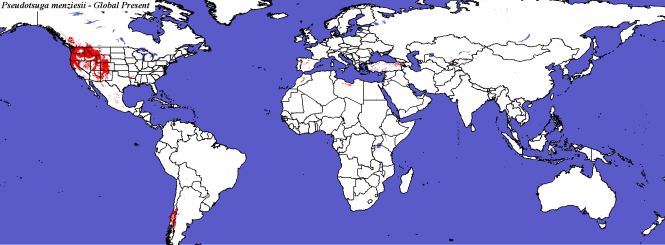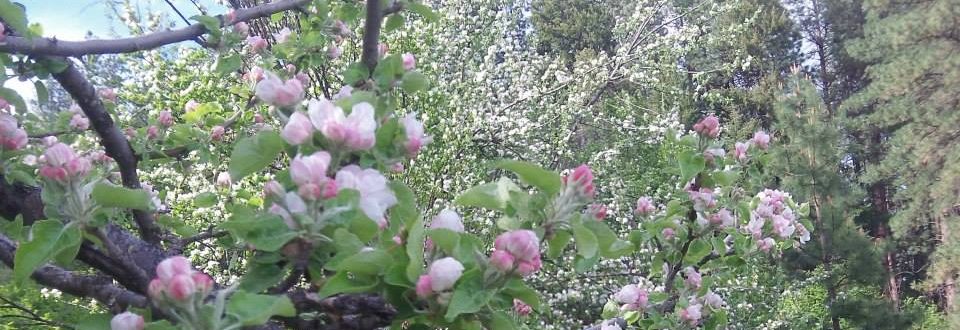It’s not the Ice Age anymore, but plant communities are still catching up. Here are some interesting maps from the ForeCASTS Project.
https://www.geobabble.org/ForeCASTS/atlas.html
The maps I’ve shared here contrast the present range of tree species with their potential range, given the current climate. Most show edible species. Others I’ve included because they constitute novel taxonomic diversity.
To summarize some general themes from the data:
-Many of the species of semi-arid California have ample habitat in the Willamette Valley and the warm canyons of the Inland Northwest
-Species of California’s coast have habitat along the coast further North (and perhaps the wettest parts of Idaho/BC).
-Forest species from the inland mountains of the Southwestern deserts have climate requirements distinct from similar Californian species. The unoccupied suitable habitat is partitioned accordingly. Mountains species prefer the mountains and coastal species prefer the coast.
-A band of humid habitat suitable for Eastern hardwoods has formed across the middle of Canada, across the Southern edge of the Canadian Shield, into the Canadian Rockies
CALIFORNIAN OAKS
Much of the Inland Northwest already has a suitable climate for savanna oaks. Shown below are Oregon oak, California Black Oak, interior live oak, and canyon live oak.
OTHER CALIFORNIAN SPECIES
Also check out the climate suitability for other California species, like California bay tree, sequoia, redwood, gray pine, sugar pine, tanoak, Northern California walnut, madrone, golden chinquapin, and incense cedar.
It’s good to see that there is sequoia habitat further North in the Cascades.

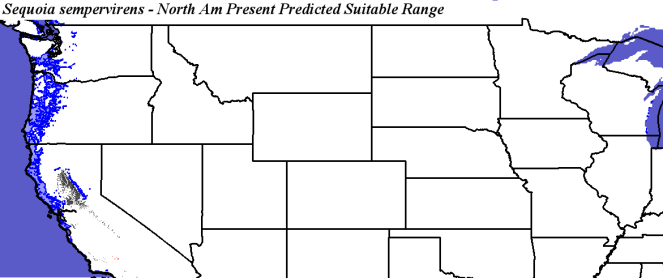
Redwoods could be growing in the Northern Cascades in Washington.
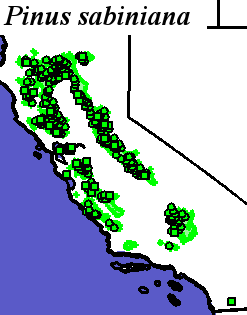
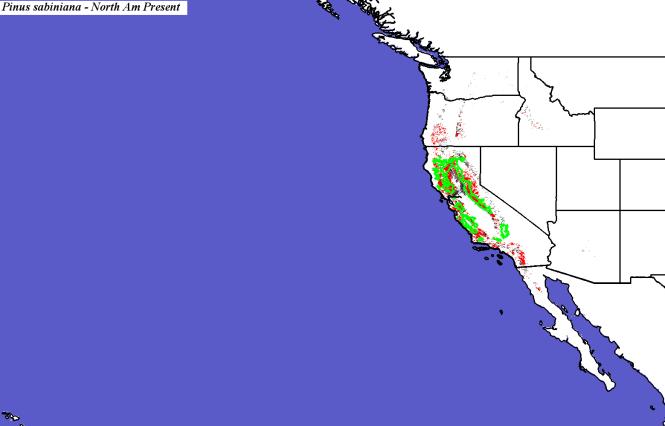
The Gray pine (Pinus sabiniana) is interesting because it grows on lower drier sites than ponderosa and Jeffery pines, which makes for a lower timber line in California. This tree could probably grow in other parts of the West that are too dry for other pines.
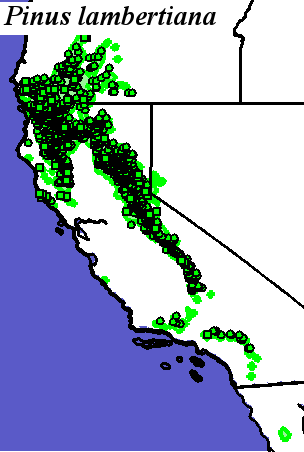
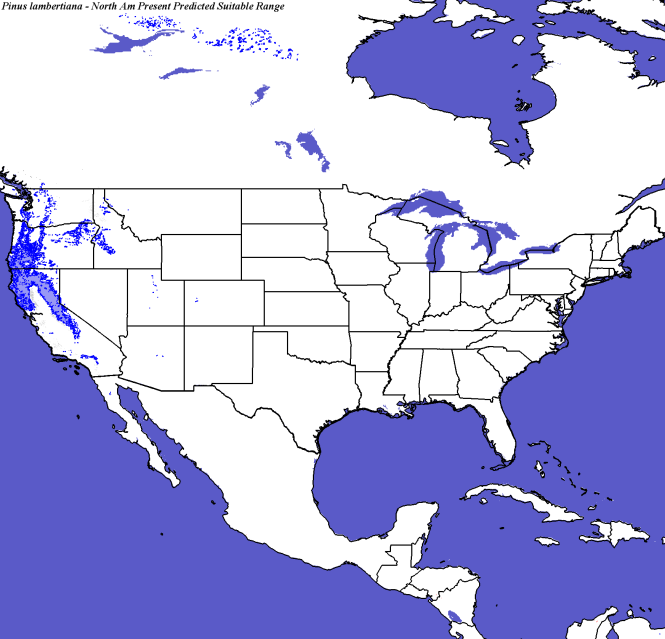
The Sugar Pine (Pinus lambertina) data illustrate the suitability of the Mountains Northwest of Boise. Data for other species indicate this is a common theme.

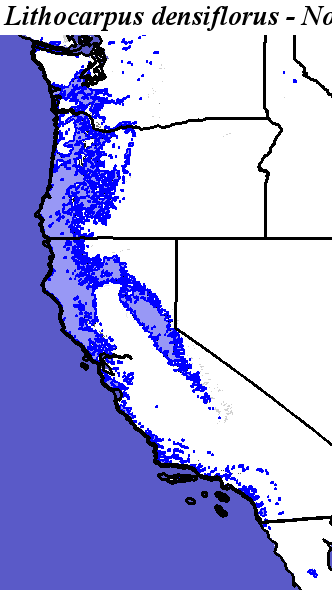
The above data for Tanoak, (Lithocarpus densiflorus) show the climatic link between the Northwest Coast and the maritime refugia of Idaho (where species like Pacific dogwood have grown since the Miocene).
The above data for Northern Californian walnut (Juglans hindsii) shows climatic parallels between California’s Central Valley and Washington’s Columbia Basin.
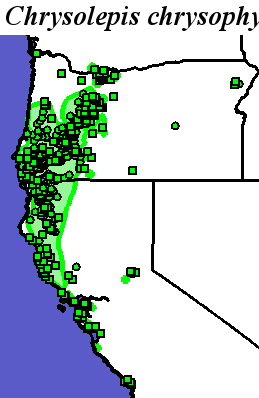
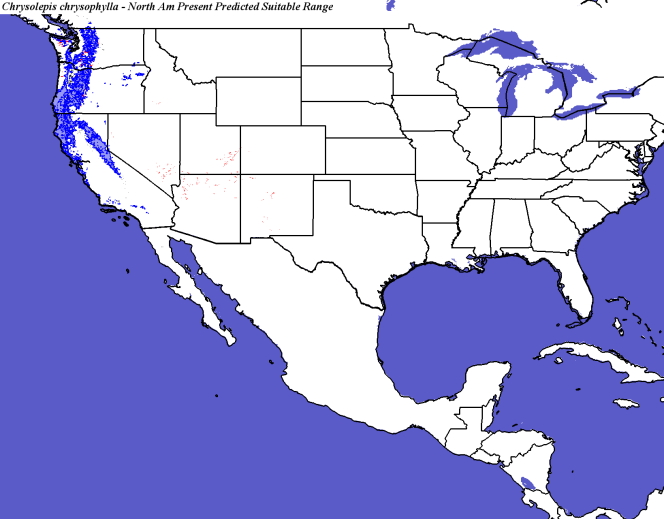
The above data for madrone and chinquapin show that evergreen broad-leaved trees could thrive in the Oregon’s Blue Mountains and the East slope of the Cascades.

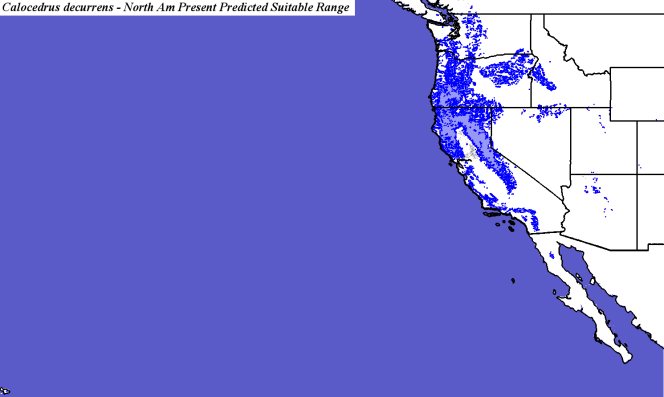
DESERT AND MOUNTAIN SPECIES OF THE SOUTHWEST
Here are some climate suitability maps for Intermountain species which I find interesting.
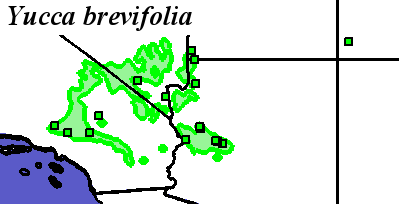
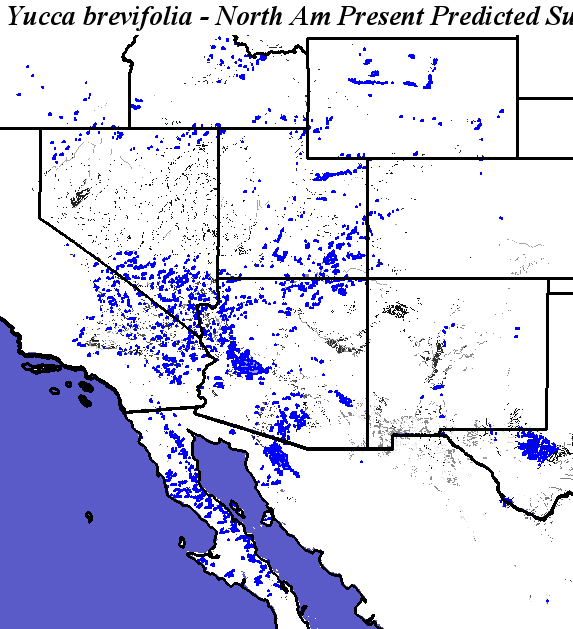
Joshua trees!
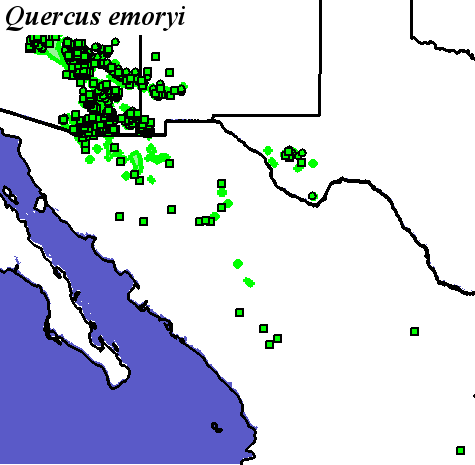
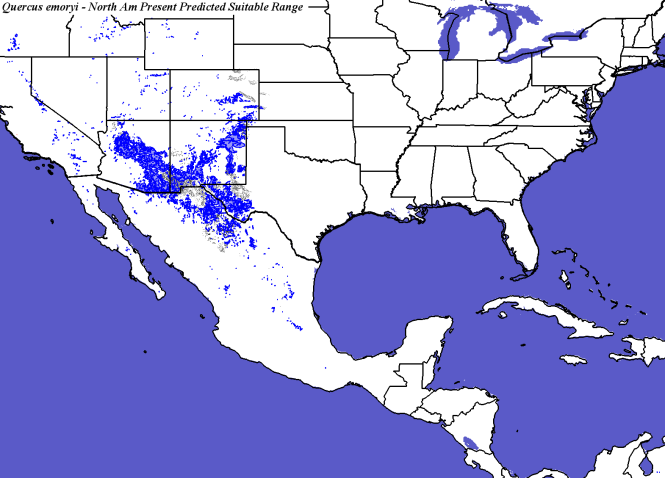
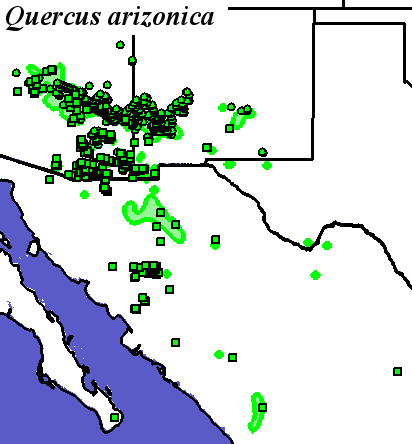
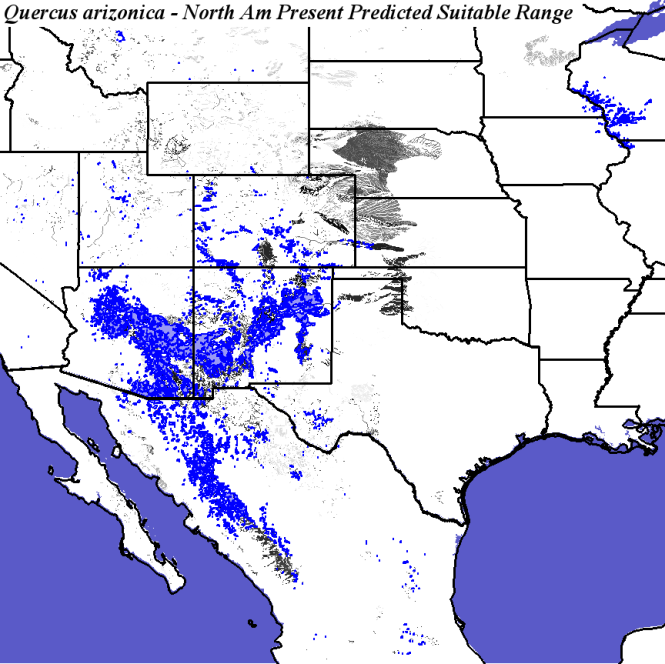
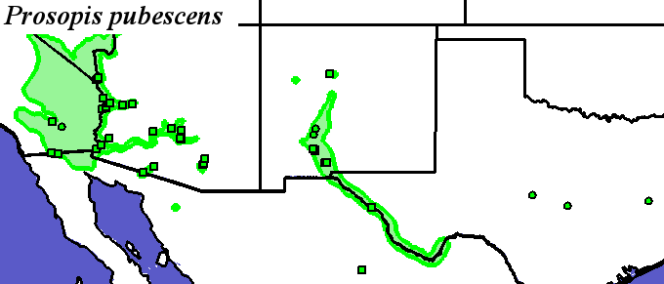
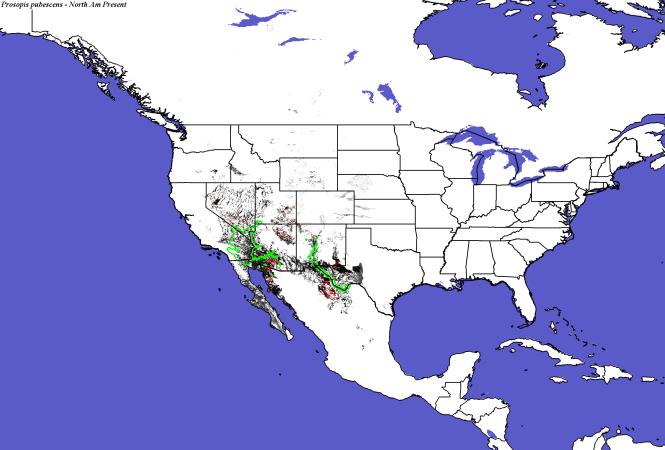
EASTERN HARDWOOD SPECIES
Other s maps show how Eastern hardwoods have an arching corridor of humid habitat across Canada- where East meets West.
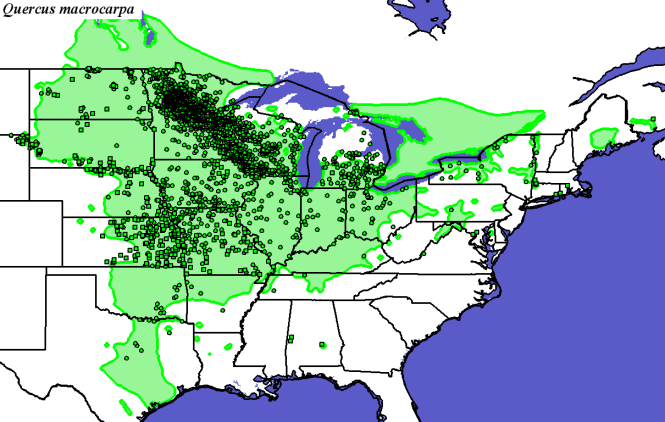
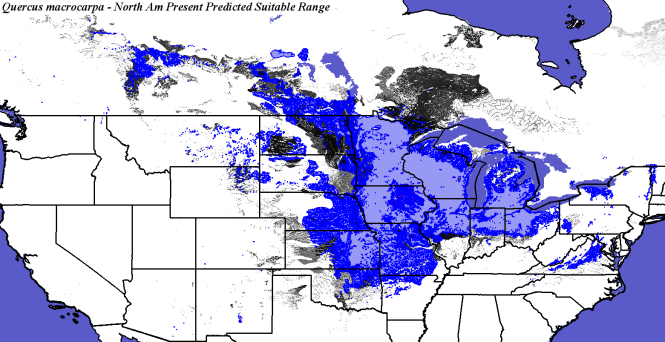

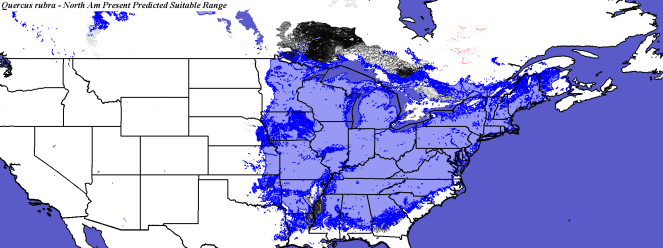
Above data shows habit for the red oak extending to British Columbia’s Northern Rockies.
Lastly, a map that shows climate analogues for Douglas fir habitat across the world. Coastal Chile, Western Iberia, the Atlas Mountains, and Northern Anatolia.
